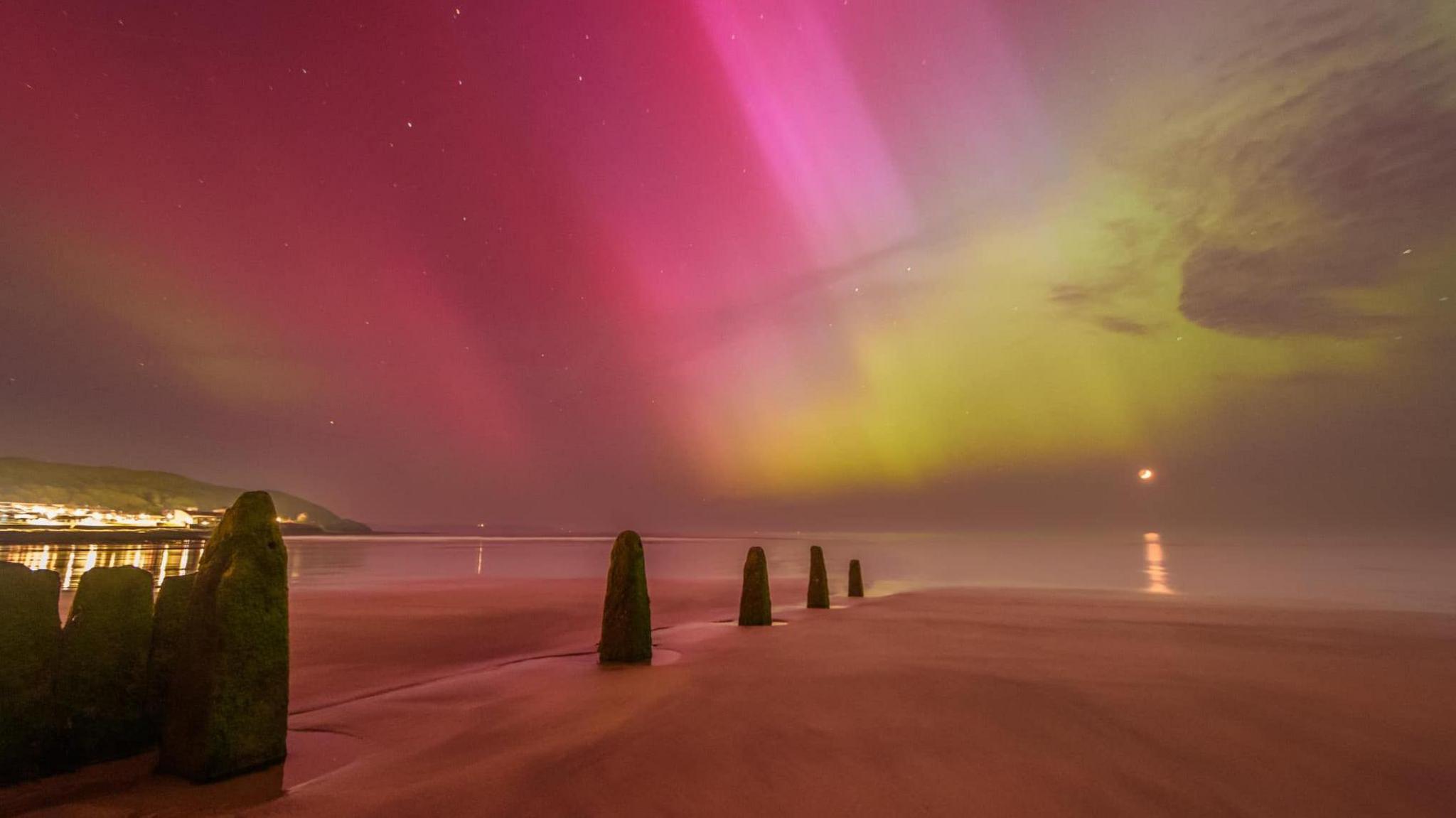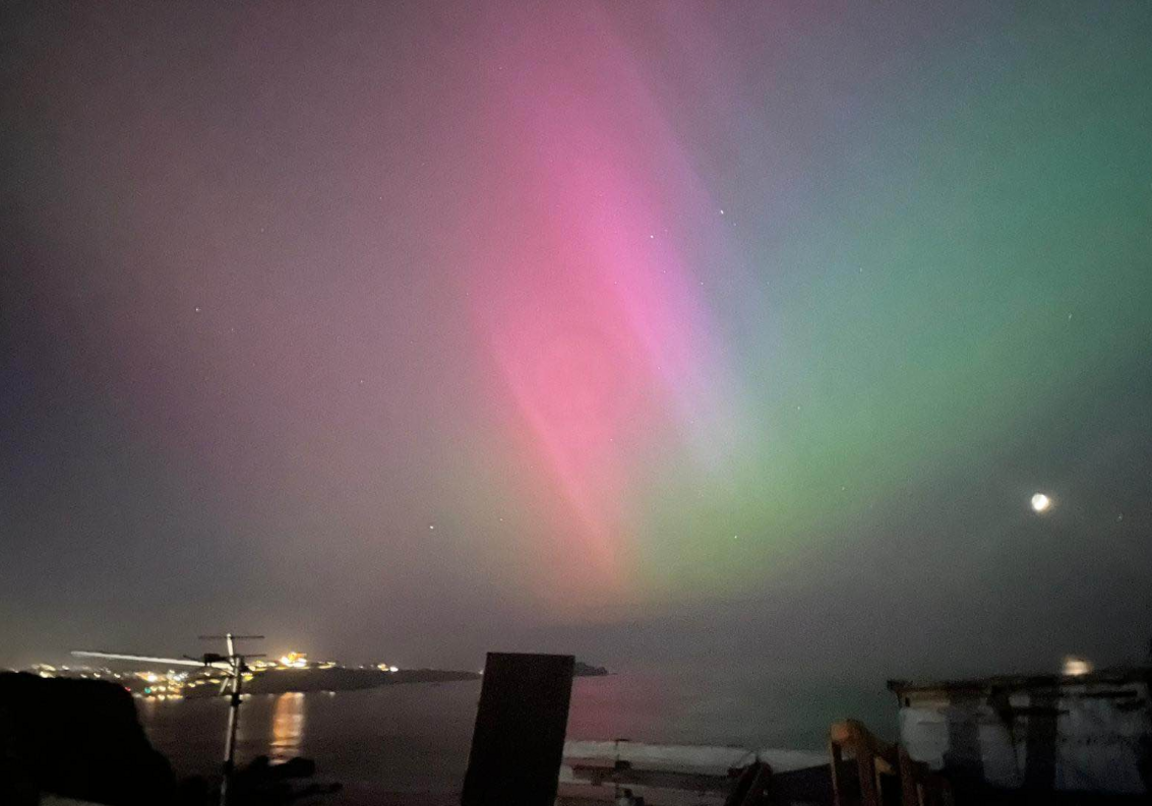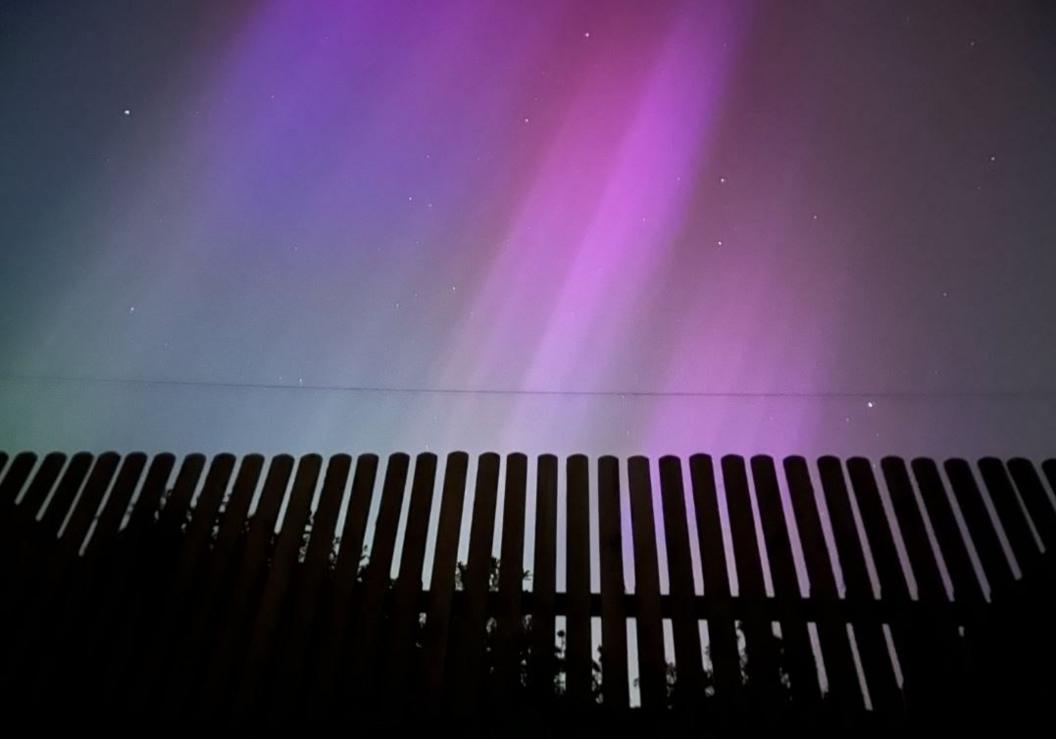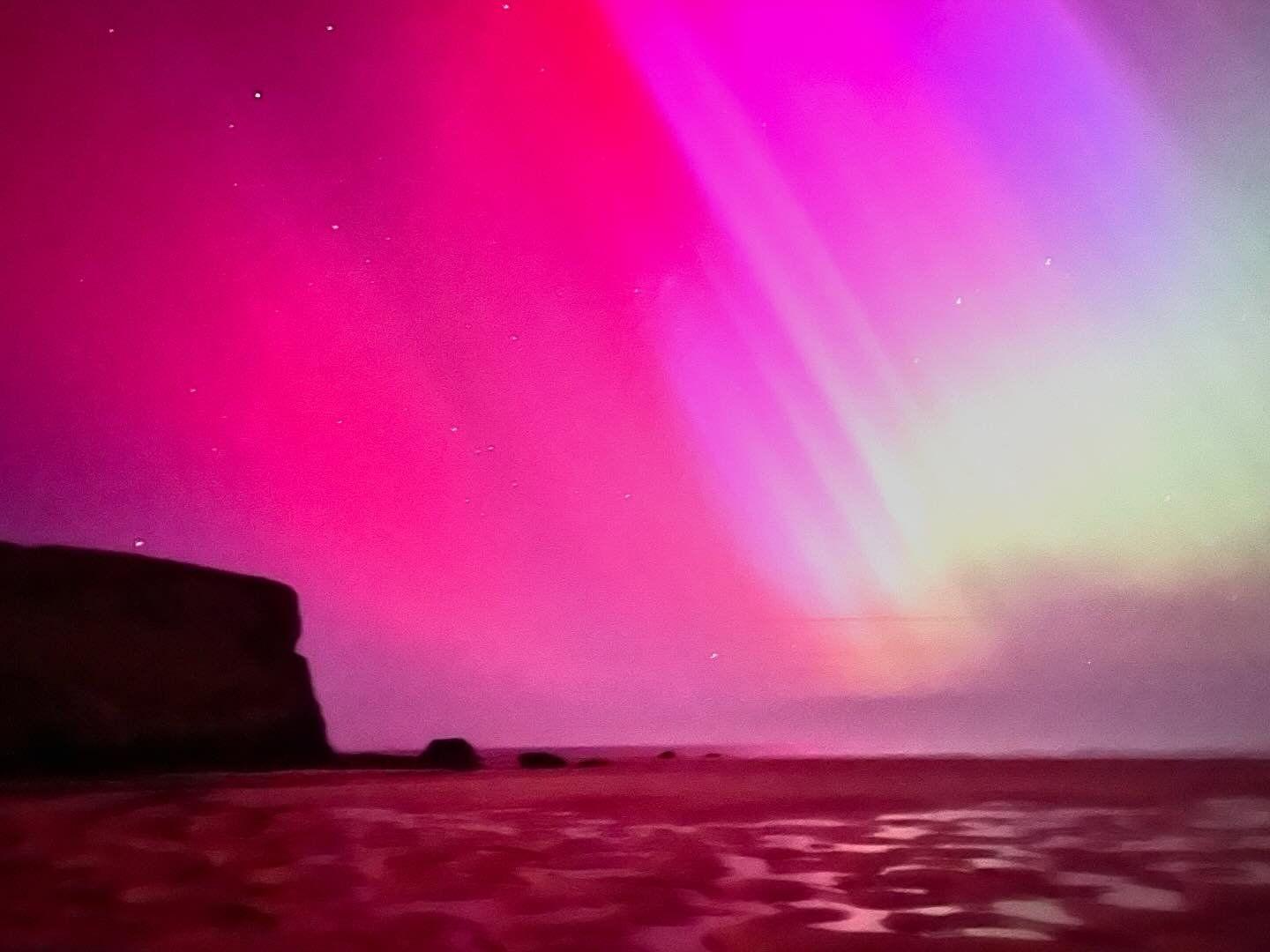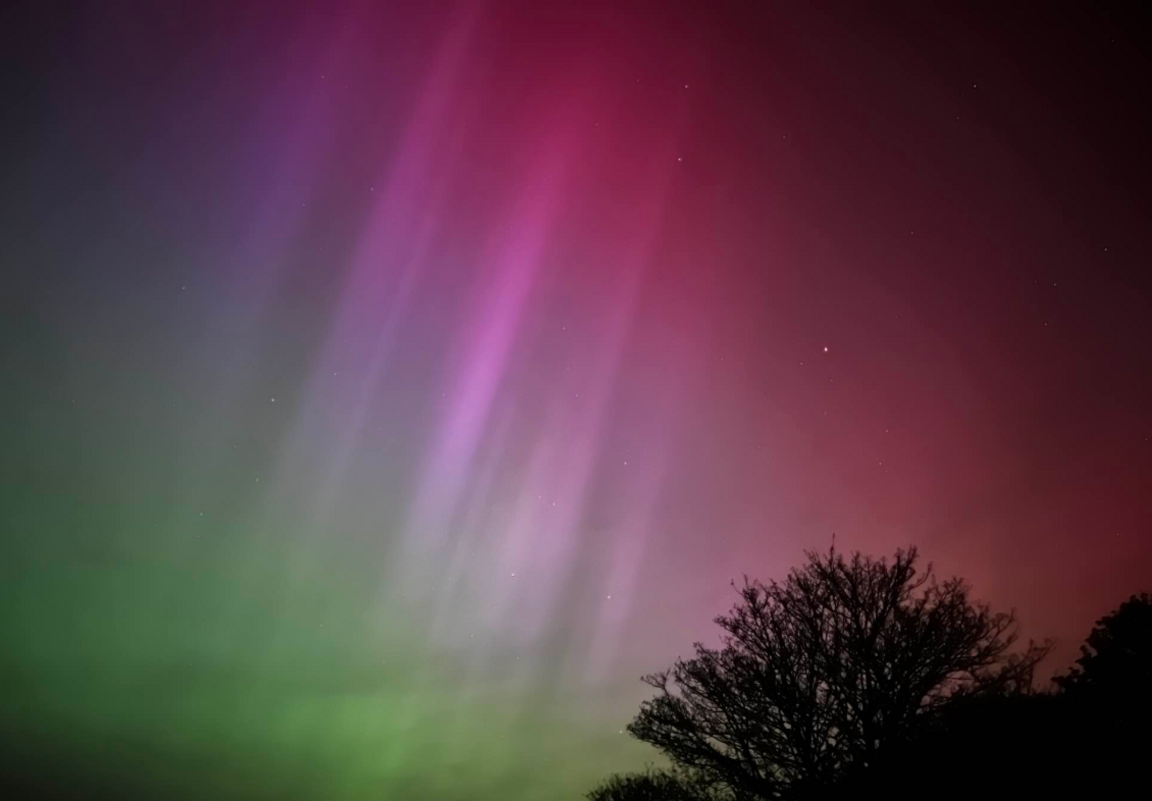Devon and Cornwall skies lit up by Northern Lights
- Image source, Padstowkitchengarden
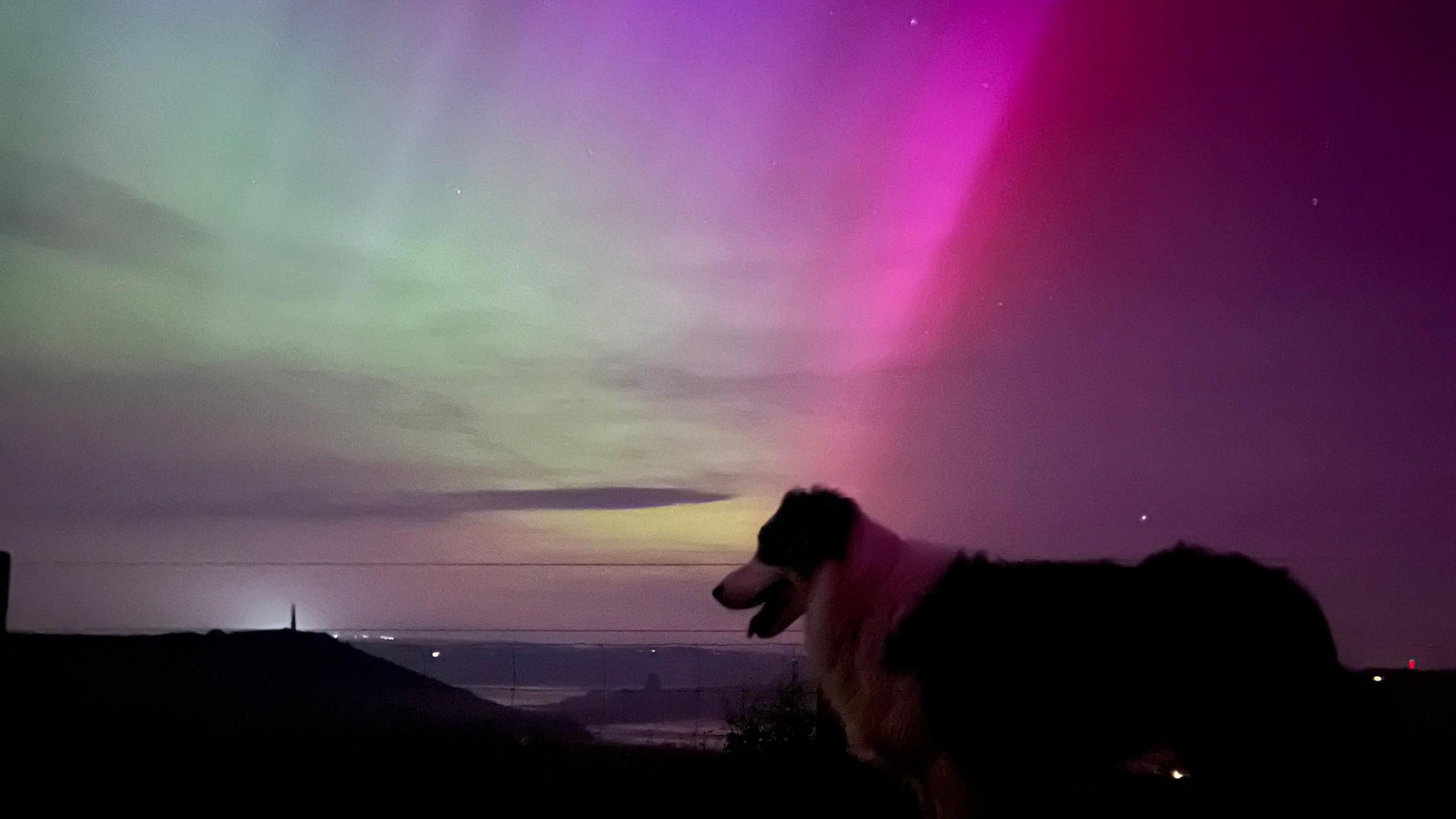
Image caption, Borage the dog looking at the Northern Lights over Padstow
1 of 7
- Published
Communities across Devon and Cornwall cast their eyes to the skies as the Northern Lights danced across the region.
Known as aurora borealis, the lights became visible after one of Earth's strongest geomagnetic storms to date.
The storm sparked a warning from the US National Oceanic and Atmospheric Administration (NOAA).
According to BBC weather, Friday evening's clear skies boosted the chances of catching one of nature's most fascinating spectacles.
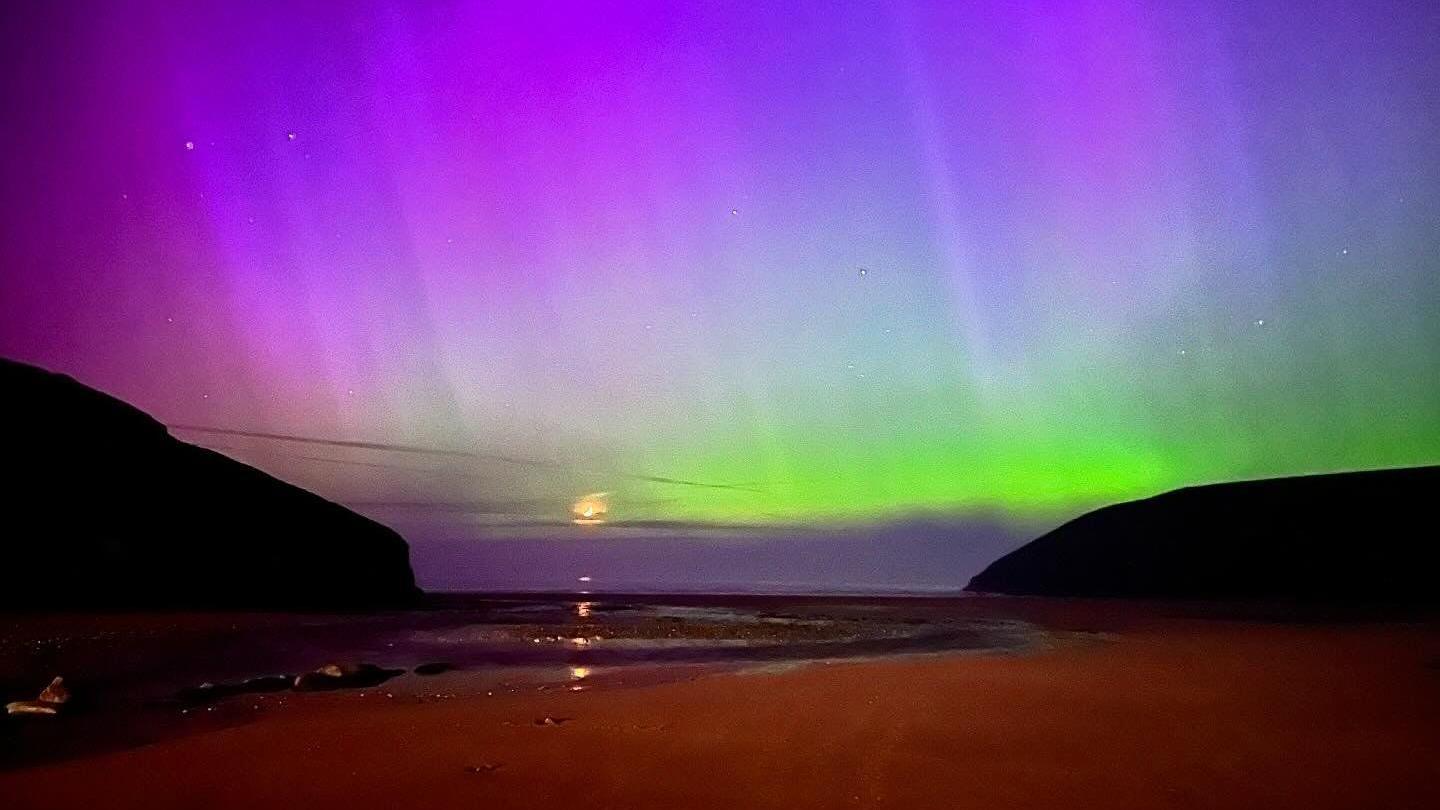
A beach with a view at Mawgan Porth
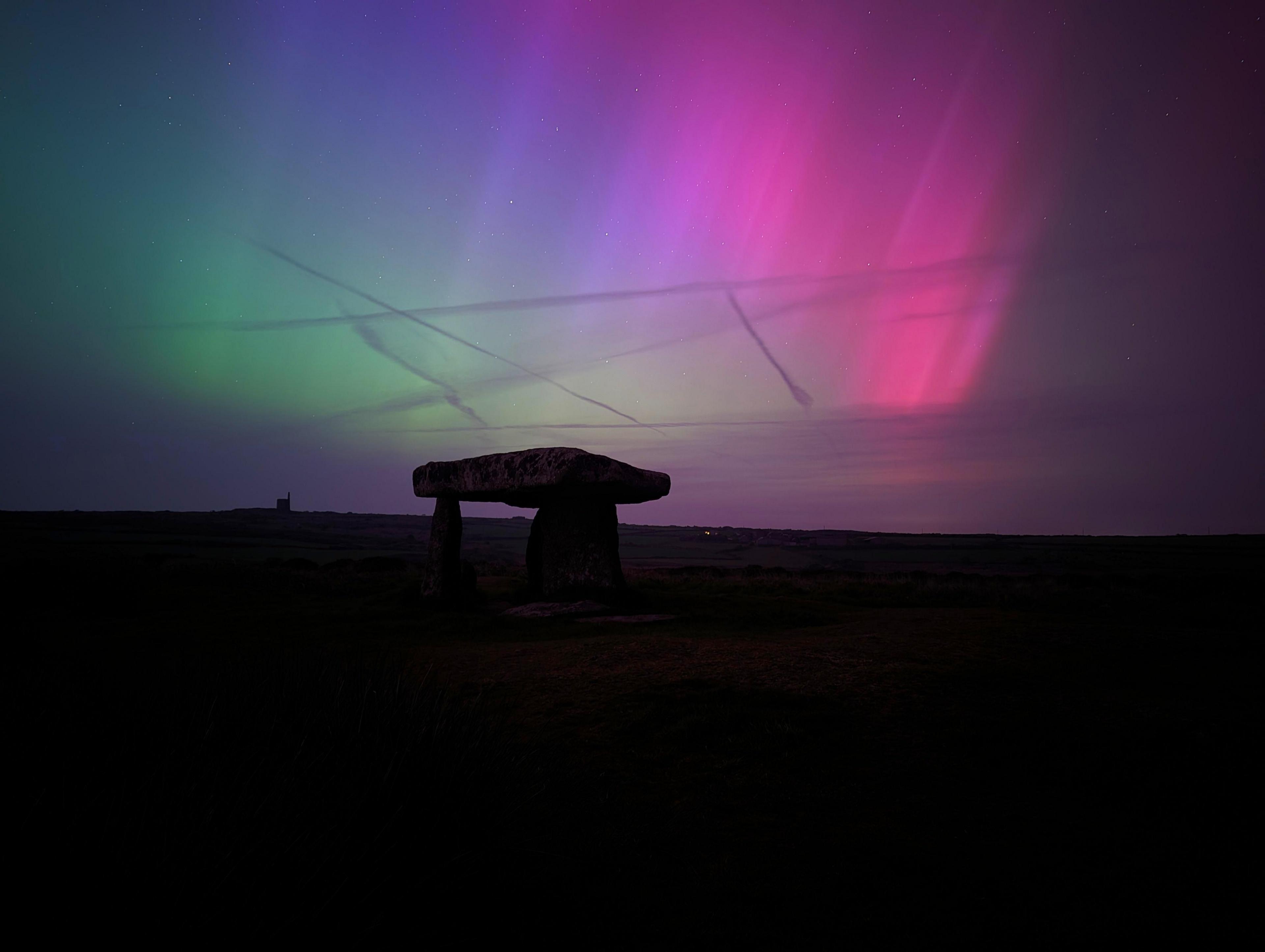
A dreamy image from Madron in Cornwall
Peter Abell of Kingsurf Surf School in Mawgan Porth, said: "The sun was just setting, you know, it was hard at first to figure out if the sun was going down or it was the actual Northern Lights."
But the truth soon shone through, said Mr Abell, "with strips of light coming from different angles".
He added: "I've never seen them here in my lifetime.
"I decided to walk out on the beach and take some pictures, it was about midnight when things started really flaring up in the sky.
"The pinks and the purples and the greens appear (on my phone camera) were 20 times better than my own eyes could pick them up.
"It made the beach look spectacularly incredible."
Mr Abell said his wife, a scientist, requested he wake her up if the lights appear again on Saturday night.
Storms of this scale could potentially impact infrastructure, including satellites and the power grid, the NOAA warned.
Met Office spokesman Stephen Dixon said "conditions could continue on Saturday night, but we still have to work out some details on where exactly that will be".
There is also expected to be a chance to see the Northern Lights on Saturday night.
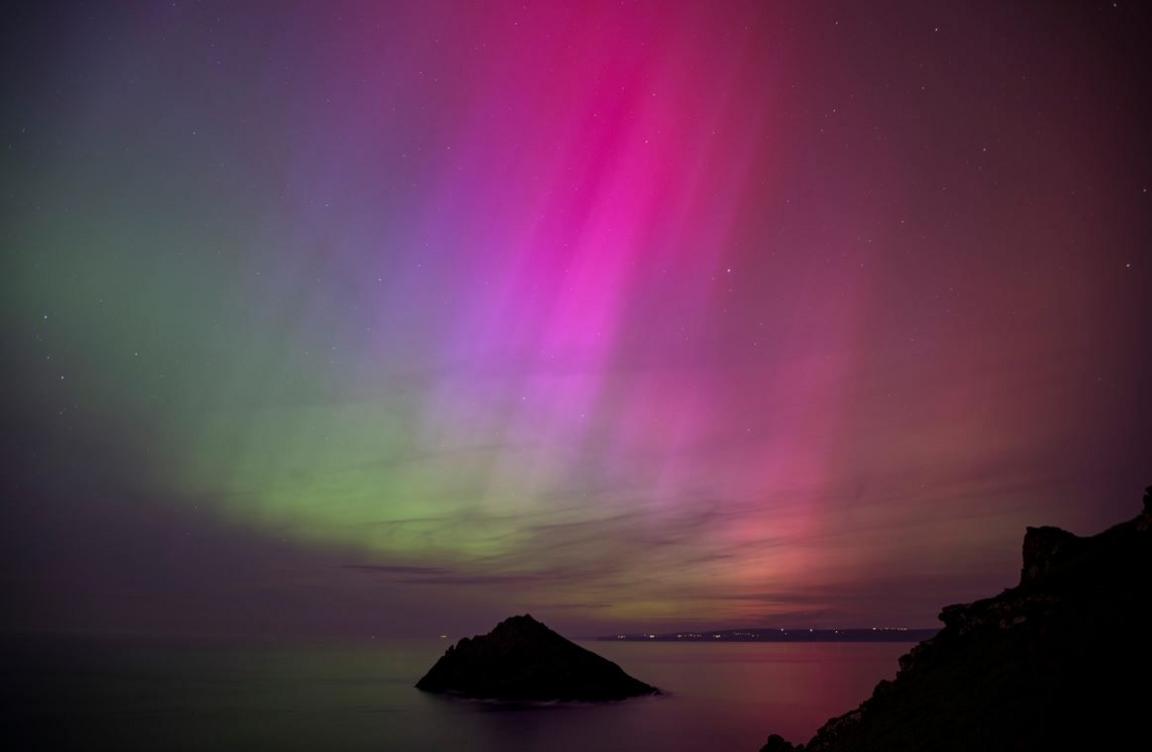
The scene at Mevagissey in Cornwall
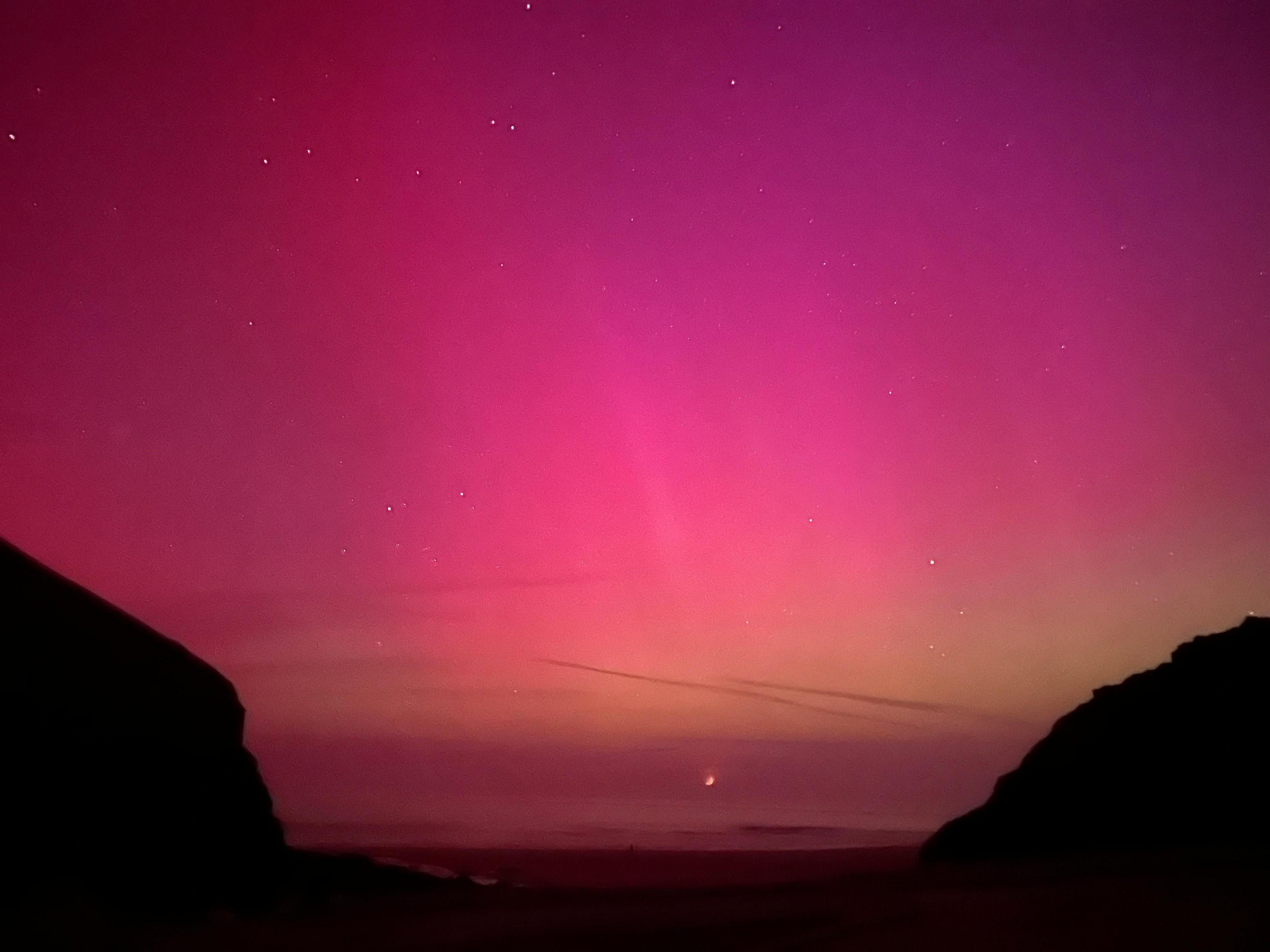
Pink hues in St Agnes, Cornwall
What are the Northern Lights?
The Northern Lights - or aurora borealis - appear as bright, swirling curtains of lights in the night sky and range in colour from green to pink and scarlet.
It is caused by charged particles from the sun hitting gases in the Earth's atmosphere.
The colours occur due to different gases in the Earth's atmosphere being energised by the charged particles.
The two most common gases in the Earth's atmosphere are nitrogen and oxygen. Oxygen atoms glow green - the colour most often seen in the Northern Lights, while nitrogen atoms emit purple, blue and pink.
The most impressive auroras occur when the Sun emits really large clouds of particles called "coronal mass ejections".
Follow BBC Cornwall on X (formerly Twitter), Facebook and Instagram. Follow BBC Devon on X (formerly Twitter), Facebook and Instagram. Send your story ideas to spotlight@bbc.co.uk
Related topics
- Published2 January
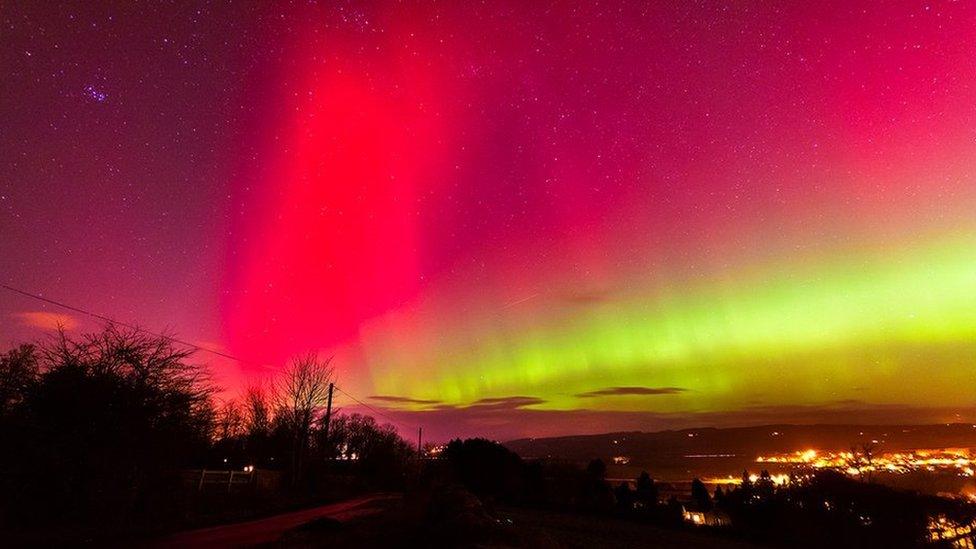
- Published11 May 2024

